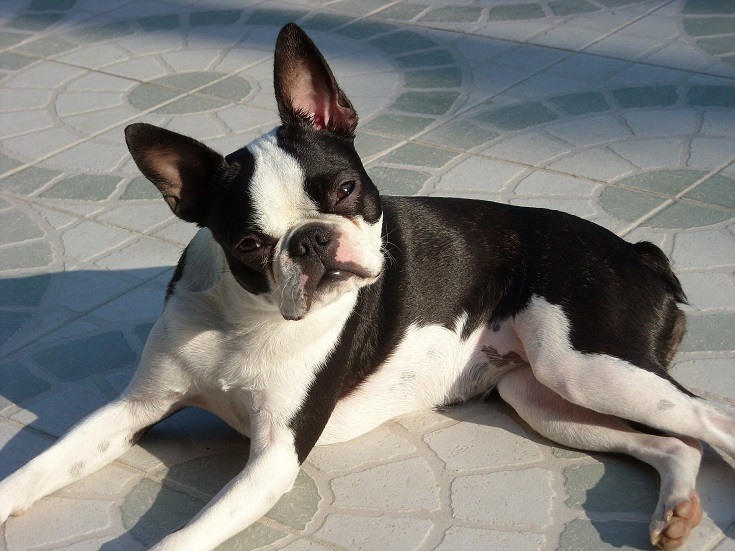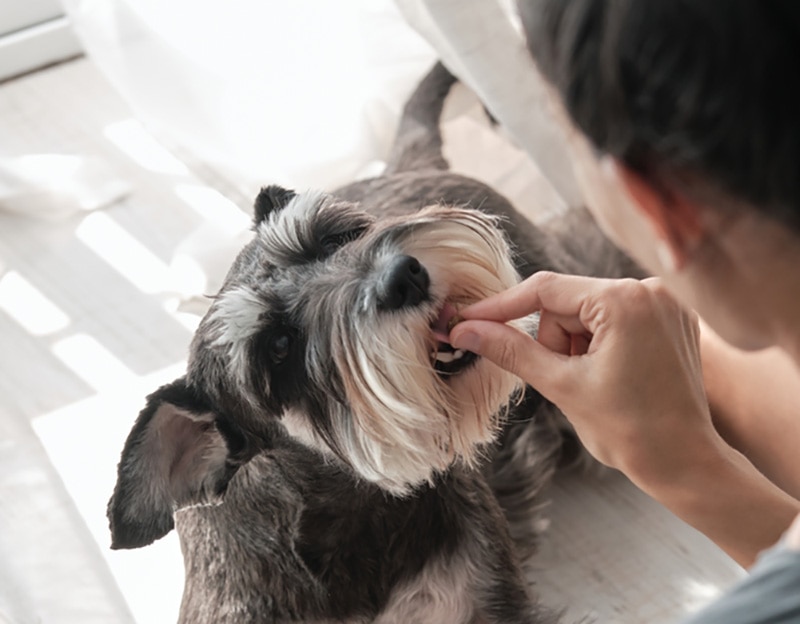What Can Pugs Eat? 4 Vet Approved Options & What to Avoid
Updated on
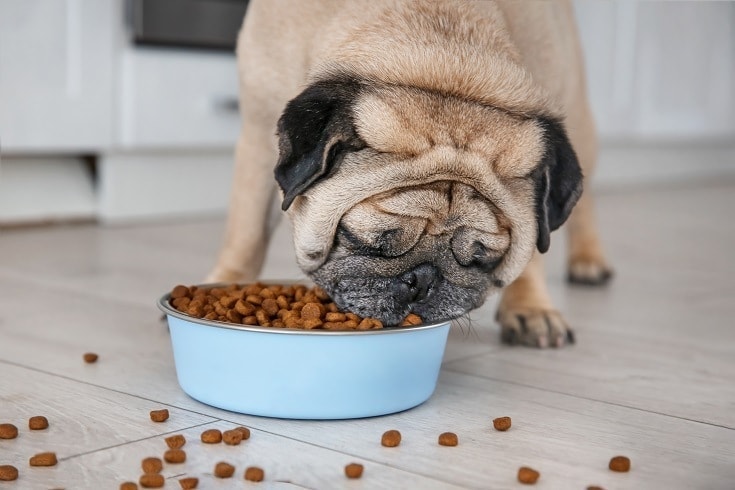
A Pug’s diet is essential to maintaining its overall health, especially because obesity is very common in these short and stocky pups. In fact, research suggests that Pugs are at the highest risk of obesity out of all the dog breeds1. That’s why it’s so important for current and prospective Pug owners to get a good handle on their nutritional needs. Whether you have a Pug already or are soon adopting one, you must familiarize yourself with what your Pug should and shouldn’t eat.
Keep reading to find our guidelines on what four things you should feed your Pug and three things you should avoid at all costs.
The Top 4 Things a Pug Can Eat
1. Dry Dog Food
Many Pug owners prefer to feed their dogs a kibble diet. Dry food encourages your Pug to chew its food, aiding in digestion and preventing tartar buildup.
The best dry food for Pugs is formulated specifically for small dog breeds. We like Royal Canin’s Adult Pug Dry Food as it’s designed to meet the nutritional requirements of Pugs 10 months or older. The formula provides essential nutrients your Pug needs to promote healthy skin and coat. It also features an ideal protein content and L-carnitine to maintain your dog’s muscle tone while simultaneously providing weight control for dogs prone to weight gain.
Royal Canin makes a kibble tailor-made for Pugs up to 10 months if yours is still a puppy. Like the adult version, this kibble is easy for your dog to pick up and chew. It also supports immune system development and can reinforce the skin barrier with nutrients to support a healthy coat.
2. Wet Dog Food
Commercially prepared wet food is another viable diet for your dog. Canned food has a higher moisture content, which is great for Pugs that don’t drink enough water or those with medical conditions that could benefit from additional hydration. Because wet food is more aromatic than dry, it’s also more palatable for picky Pugs (if such a thing exists).
However, exercise caution if you feed a wet diet for your Pug. Canned foods often contain extra calories or fat, which can contribute to obesity.
If your pup enjoys wet food, you might save it for special occasions or a once-weekly treat. This will also save you money, as canned food is typically much more expensive than dry food.
We recommend wet food focusing on weight control for your Pug, such as Hill’s Science Diet Adult Perfect Weight Hearty Vegetable & Chicken Stew. This recipe is designed to help your dog achieve a healthy weight. It contains the perfect balance of nutrients and prebiotics to ensure gentle digestion.
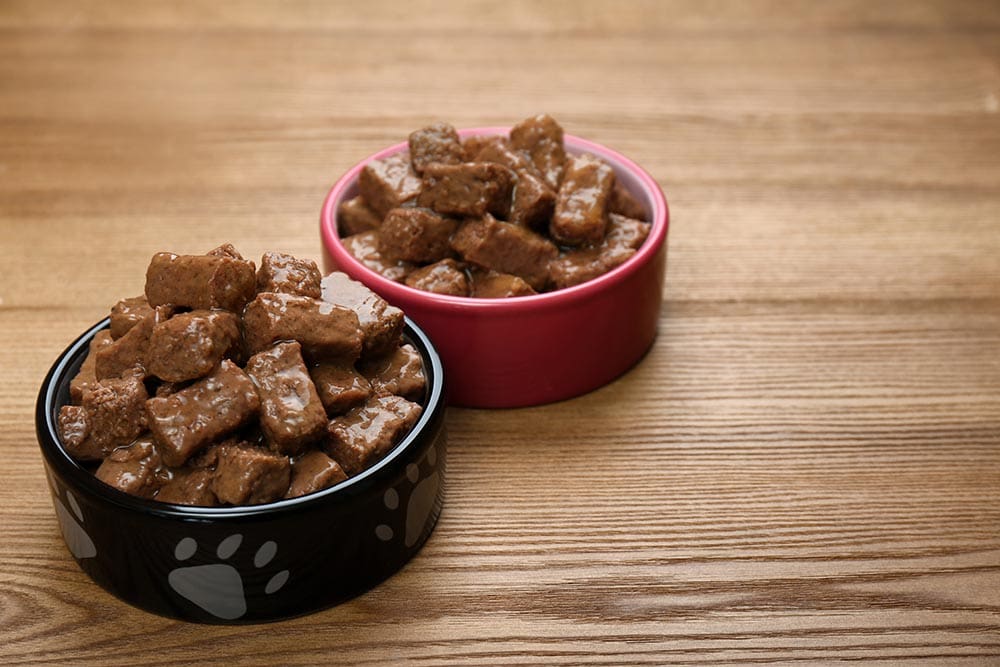
3. Fresh Dog Food Diet
There’s no shortage of fresh pet food companies, but they’re not all created equal. If feeding your Pug a fresh diet is important, we highly recommend The Farmer’s Dog. This company is a dog food delivery service focusing on high-quality protein, healthy fats, fruits and veggies, and supplemental vitamins and nutrients to ensure your dog’s nutritional needs are met.
The Farmer’s Dog contains omega-3 fatty acids to reduce inflammation and improve arthritis, both beneficial if your Pug suffers from joint issues.
4. Purposeful Snacks

Snacks are designated to help keep your pup’s hunger at bay until its next meal time. It would be best if you were purposeful in what kinds of snacks you’re feeding and when you’re feeding them. Do not feed snacks whenever your dog asks for them, and don’t give them just anything. The snacks you provide should be healthy and tasty. In addition, Pugs are a very food-motivated breed, so they will learn to beg for snacks relentlessly. Do not give in. What works well for many people is to keep a portion of the dogs daily kibble ration aside to give as rewards and snacks.
We recommend scheduling your dog’s snacks for training sessions.
- Green beans
- Carrots
- Small pieces of plain cooked meat (e.g., chicken, salmon, beef)
- Apples (core removed)
- Blueberries
- Unsalted and unsweetened peanut butter (in small amounts)
- Commercial low calorie treats
The 3 Things a Pug Shouldn’t Eat
1. Table Scraps
It doesn’t matter how hard your Pug is begging for a taste of what you’ve got on your plate—you must learn to resist it. Of course, you already know that your dog is prone to obesity, so you must be mindful of what you’re feeding your pup. Another reason table scraps are a no-go is that your pup’s digestive system isn’t made to digest the rich and fatty foods we eat. Plus, your table scraps may contain foods that are toxic to dogs, which brings us to our next point…
2. Toxic Foods

There is a huge list of potentially harmful human foods that no dog of any breed should eat. Below is a non-exhaustive list of the foods you must never offer your Pug:
- Onions
- Garlic
- Chocolate
- Macadamia nuts
- Avocado
- Xylitol
- Alcohol
- Grapes
- Raisins
- Coffee
- Coconut
- Citrus
- Dairy
- Raw or undercooked meat or bones
- Salty foods
3. Grain-Free Diets
Unless your veterinarian recommends a grain-free diet for your Pug, grain-free food is not necessary. There have been reports over the last several years that such a diet could be connected to a heart condition called dilated cardiomyopathy (DCM). The FDA reports that most cases of non-hereditary DCM can be linked to diets containing legumes or sweet potatoes (e.g., peas, lentils, etc.) high in the ingredient list.
Tips for Feeding Your Pug
Knowing what you should and shouldn’t feed your Pug is not enough. There are several things owners need to do to ensure their pet is getting fed appropriately.
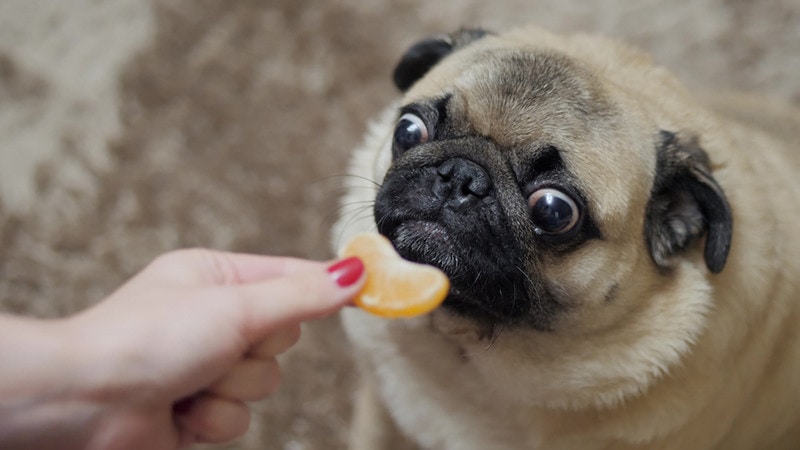
1. Do Not Free Feed
Free feeding is when you always leave a bowl of food out for your dog. Some pet owners prefer this feeding method as it allows their pets to come and go as they please instead of having set meal times. However, while free feeding might work for some dogs, it is generally not recommended for Pugs.
Pugs don’t have the best gauge of satiety (perhaps, more accurately, they don’t care when they’re full). Your Pug will eat until its food is gone, so you must control its portions and keep regularly scheduled meal times.
2. Feed Proper Portions
You know that free-feeding is a no-go for Pugs, but how much should you feed your pet then? Like most dogs, Pugs should be fed portions dictated by their body size, age, and activity levels to prevent overfeeding. This typically averages around 1 to 1.5 cups of food daily, but this isn’t a hard and fast rule.
Portion size is mostly dictated by target weight. Ask your veterinary technician or veterinarian what the target weight is for your Pug, so you know exactly how much it should be eating. Remember that feeding guidelines on food packaging are based on healthy and active dogs. If your Pug is more sedentary, you must feed him less.
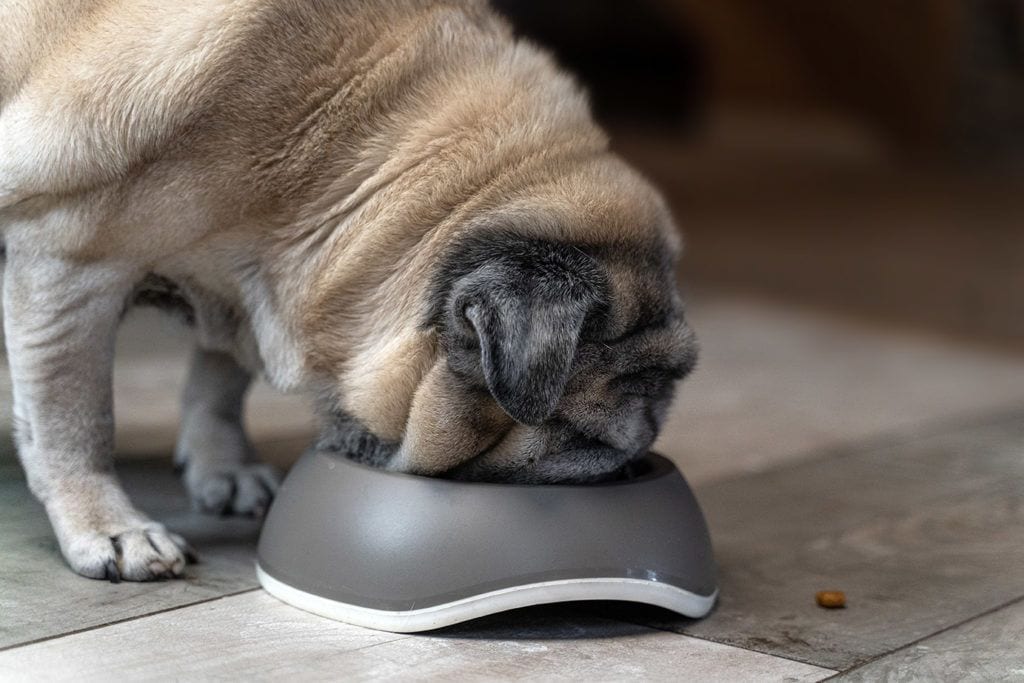
3. Adjust Meal Frequency By Age
Depending on age, you may need to feed your Pug more or less frequently.
Puppies between the ages of eight weeks and six months should have three meals a day. Consider offering healthy snacks between meals to keep your pup satiated.
Pugs older than six months should have two meals a day. If this isn’t enough for your dog, you can up it to three.
4. Consider Kibble Size
Pay close attention to the kibble size if you’re feeding your Pug a kibbled diet. A Pug’s mouth shape limits how well it can pick up and chew its food. You might consider buying Pug-specific food, like Royal Canin’s Adult Pug Dry Food, as it’s been specially formulated for their small mouths.
If your Pug is consistently having difficulty with dropping food out of their mouths this can be one of the signs of BOAS (brachycephalic obstructive airway syndrome) which should be checked out with your veterinarian.
You can also complement this valuable information by using our calculator tool here:
The exact amount of calories an individual animal needs to maintain a healthy weight is variable and influenced by many factors including genetics, age, breed, and activity level. This tool is meant to be used only as a guideline for healthy individuals and does not substitute veterinary advice
Final Thoughts
Feeding your dog the appropriate diet in the proper portions is essential to maintaining good health. This is especially true for Pugs, as they are one of the breeds at the highest risk of obesity. If you’re still unsure what diet your Pug should be on, speak to your vet. They will consider your dog’s age, activity level, and health to make diet suggestions to keep your pup in tip-top shape.
Check out our blog on the best foods for Pugs for more diet inspiration.
Featured Image Credit: Africa Studio, Shutterstock





